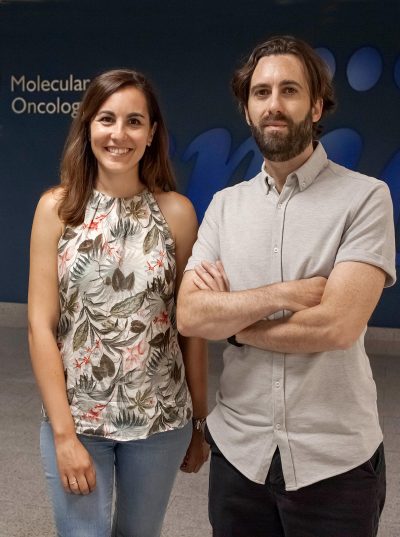
CNIO researchers found that cells reported to have excess nutrients can lead to organ dysfunction and inflammation, potentially accelerating aging. Using animal models and comparisons with human blood samples, they showed that targeting inflammation could alleviate the symptoms of aging and prolong life, which would have implications for understanding diseases related to aging and ‘obesity.
Researchers are discovering that excess nutrients in cells trigger inflammation and organ dysfunction, thereby accelerating aging. Their study suggests that interventions against inflammation could improve lifespan.
The accelerated aging of our population highlights the urgency of understanding the molecular changes that occur in the body over time. The mTOR protein complex plays an essential role in many bodily functions, including metabolism. A new study led by researchers at the Spanish National Cancer Research Center (CNIO) shows that even slight increases in mTOR activity can induce premature aging in animal models, reducing their lifespan by up to 20 %.
This study, published in Natural aging, provides insight into why diseases associated with aging worsen in individuals with a high body mass index, an indicator of obesity and inflammation. This also explains why calorie restriction, known to extend the lifespan of animals, promotes healthy aging by activating specific genes that interact with mTOR.
Additionally, the study presents a new research tool designed “to study the relationship between increased nutrients and aging in different organs,” according to lead author Alejo Efeyan, who leads the Metabolism and Signaling Group cell at the National Cancer Research Center (CNIO). .
Manipulation of mTOR in animal models
The activity of the mTOR protein complex is regulated depending on the amount of nutrients available in the cell. The authors developed a method to manipulate mTOR activity in animal models by targeting the protein that signals nutrient levels to mTOR. By genetically modifying this protein to simulate higher nutrient levels, they triggered mTOR to activate its pathway as if the animals were consuming more food, even if their actual diet remained unchanged.

Ana Ortega-Molina, lead author and current researcher at the Severo Ochoa Molecular Biology Center, and Alejo Efeyan, lead author at the CNIO Metabolism and Cell Signaling Group. Credit: Antonio Tabernero /CNIO
Consequences of enhanced mTOR activity
When animals carrying the modified protein reach maturity, their cellular functions begin to deteriorate, leading to symptoms of aging such as thinner skin and damage to organs like the pancreas, liver and kidneys. The cells of the immune system come to repair them but are overwhelmed by the extent of the damage. They build up and, instead of repairing themselves, trigger inflammation which further aggravates the problems in these organs.
This cycle of damage and ineffective repair shortens animal lifespans by 20%, which is equivalent to about 16 years in humans.
Potential therapeutic measures
The researchers aimed to disrupt this cycle by inhibiting the immune response that causes inflammation. As a result, organ damage improved enough to allow the man to gain what would be a few years of life.
First author Ana Ortega-Molina, who directs the Cancer and Aging Metabolism Laboratory at CBM, notes that acting on chronic inflammation is “a potential therapeutic measure that controls health deterioration.”
Potential human implications
When the CNIO group manipulated mTOR to simulate excess nutrients, the resulting changes mirrored those observed in natural aging. They compared their model to colonies of naturally aging mice, including their own and those maintained by the National Institute on Aging (NIA).
For example, the activity of lysosomes, which are the organelles with which the cell eliminates and recycles its waste, is reduced in naturally aged and genetically modified animals. “When there is an excess of nutrients, it makes sense for the cell to stop the recycling activity of lysosomes, because this recycling occurs especially when there are no nutrients,” explains Efeyan.
This decrease in lysosomal activity also occurs in human aging, as verified by the group from the University of Valencia by comparing blood samples from young people and septuagenarians.
A new tool
Beyond this article, Efeyan believes that this new animal model offers “fertile ground to ask more questions about how increasing nutrients, or their signaling, facilitates processes in different organs that allow us to understand particularly their aging. Or, for example, study the relationship with neurodegenerative diseases, because there is some inflammation in the central nervous system. It’s a tool that many more people can use.
Other co-authors include Rafael de Cabo of the National Institute on Aging (NIA) in Bethesda, US, and Maria Casanova-Acebes, head of the Cancer Immunity Group at CNIO.
Reference: “A slight increase in nutrient signaling to mTORC1 in mice leads to parenchymal damage, myeloid inflammation and shortened lifespan” by Ana Ortega-Molina, Cristina Lebrero-Fernández, Alba Sanz, Miguel Calvo-Rubio, Nerea Deleyto-Seldas, Lucía de Prado-Rivas, Ana Belén Plata-Gómez, Elena Fernández-Florido, Patricia González-García, Yurena Vivas-García, Elena Sánchez García, Osvaldo Graña-Castro, Nathan L. Price, Alejandra Aroca-Crevillén , Eduardo Caleiras, Daniel Monleón, Consuelo Borrás, María Casanova-Acebes, Rafael de Cabo and Alejo Efeyan, June 7, 2024, Natural aging.
DOI: 10.1038/s43587-024-00635-x
This work was funded, among others, by the Spanish Ministry of Science, Innovation and Universities, the Spanish Research Agency, the European Regional Development Fund, the Scientific Foundation of the Spanish Cancer Association , the “la Caixa” Banking Foundation, Olivia Roddom Oncology. Fellowship, Intramural Research Program at NIA,
” data-gt-translate-attributes=”({“attribute”:”data-cmtooltip”, “format”:”html”})” tabindex=”0″ role=”link”>National Institutes of Health. Yurena Vivas, one of the authors, is the beneficiary of a CNIO Friends contract funded by the Domingo Martinez Foundation.